Mille Miglia: Racing in a Living Museum
Some 1,000 miles of sleep deprivation, ego-inflation and mad driving in Italy

by Michael Frank
It’s 4:30AM and Des Sellmeijer is on a shuttle bus in Parma, Italy. He’s headed to the start of the fourth and final leg of the 2015 Mille Miglia, a 1,000-mile road rally around Italy that circuits from Brescia in the north, outside Milan, to Rome, then back north again, through Tuscany, eventually finishing back in Brescia. This is the third night in a row that Sellmeijer—founder and editor of a car enthusiast website called GT Spirit—has averaged roughly four hours of sleep.
Why no sleep? Because Sellmeijer is part of a group of drivers and co-drivers (I’m his co-driver) piloting Mille Tribute cars. That is, while the “main event” of the Mille Miglia is a vintage rally of now massively valuable sports cars produced between 1927-1957 (the years of the original Mille Miglia race), the Tribute consists of modern makes, mainly from Mercedes-Benz and Ferrari. While we certainly have it easier than the racers of the classics—they don’t have the handling benefit of modern cars, not to mention air-conditioning, electric windows, and stability control wizardry—we’ve also started every leg at between 4AM and 6AM, and have seldom finished before 9PM each night. The classic drivers start later and finish later.
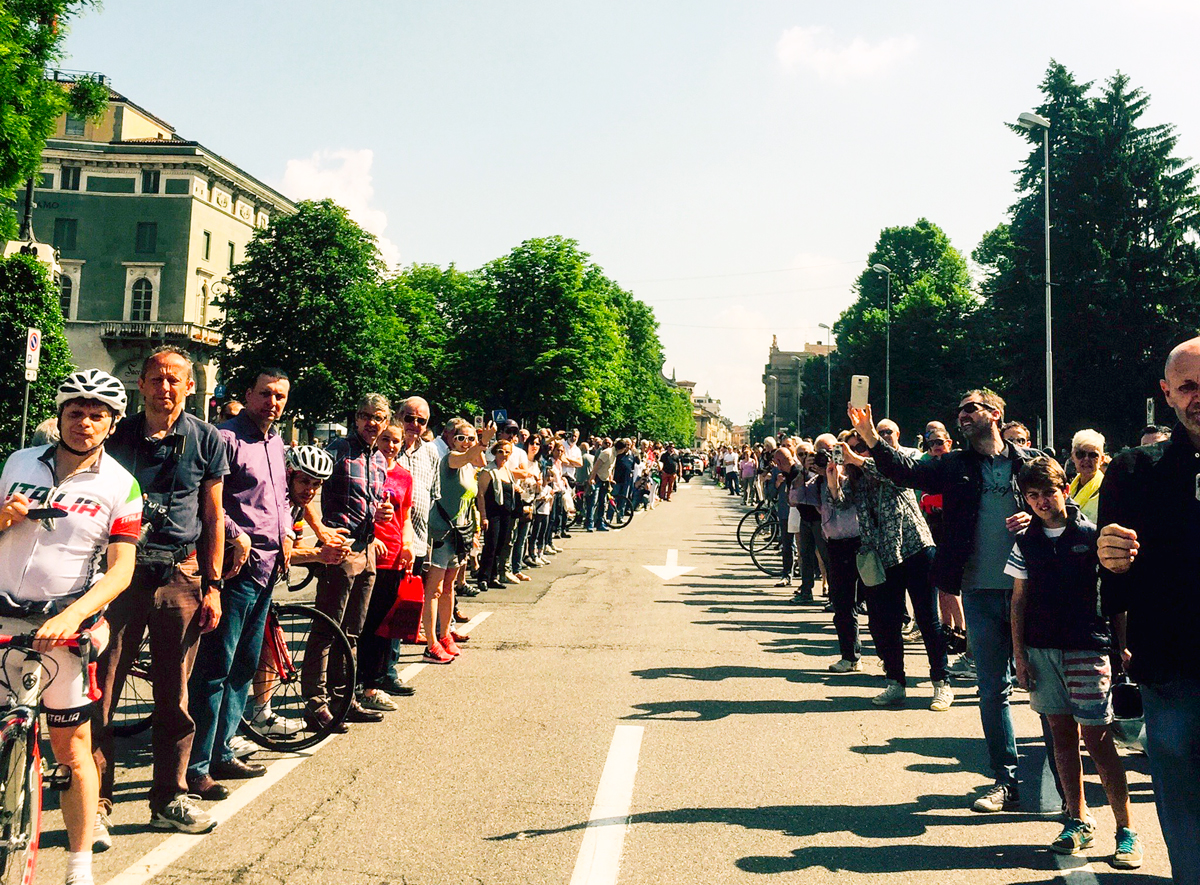
Over the past three days driving our Mercedes-Benz SL 500 Special Edition Mille Miglia 417, Sellmeijer experienced the most captivating part of participating in the Mille Miglia—being treated like a rockstar everywhere. The why of this is uniquely Italian. Other nationalities might sneer at strangers treating their public roads like a race track, but in Italy—a country that embraces spectacle like no other—we’re egged on.
We’re greeted by throngs of insane fans, yelling, whistling, holding up makeshift signs. People yell, ‘Gas, gas, gas!’
In every single hamlet large and small, from northern Italy down to Rome and back north again, we’re greeted by throngs of insane fans, yelling, whistling, holding up makeshift signs. People yell, “Gas, gas, gas!” to get you to punch it as you blow by, and it’s not only fans that have encouraged this sort of behavior and lauded us with mad cheering.
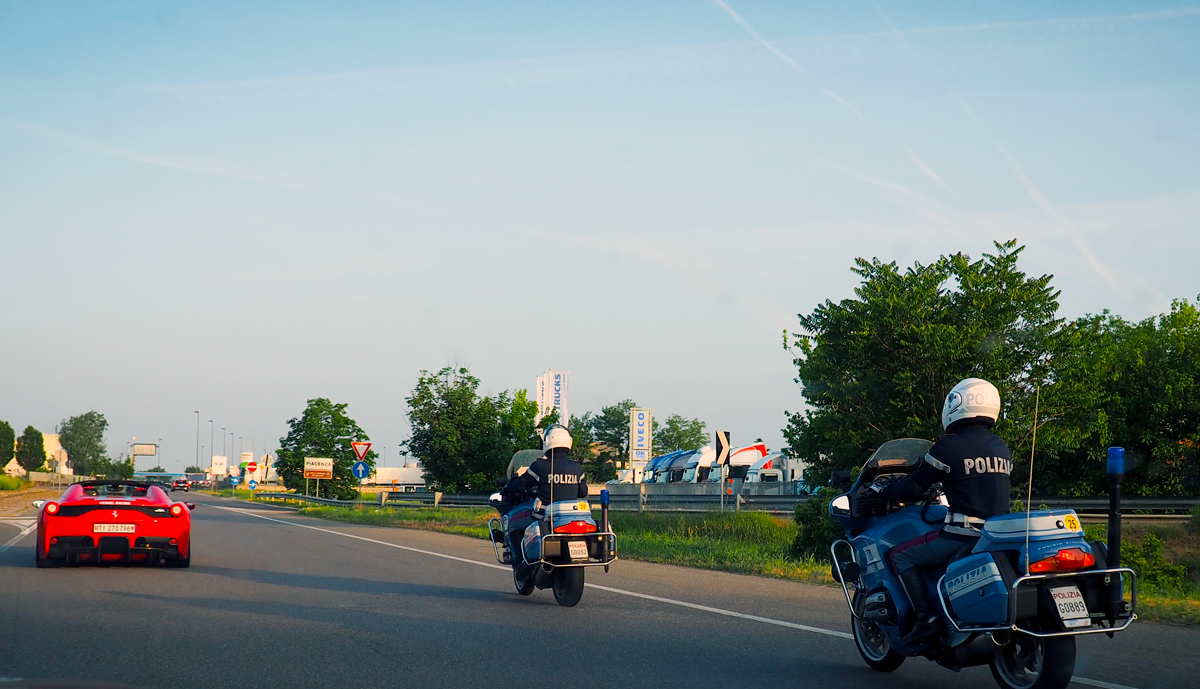
The first time a police officer, mounted on a motorbike, pulled alongside our car, we were pretty sure we were headed directly to jail. A $100k-plus Mercedes-Benz pulling double the speed limit? We assumed we were done for. Instead the cop nailed the throttle so we could go faster. In fact, between every hamlet, we’re picked up by a police motorcycle escort, who races ahead and then sets up roadblocks for cross traffic as we enter larger cities, and pushes the pace at three times the posted speed limit. When we approach speed cameras, they point them out, slowing everything to a crawl, and then it’s back on as fast as possible.
The police aren’t just doing this because they love the spectacle (they do, by the way, and pose for snapshots with us at a gas station), but to ensure a level of order to the procession. Since they cannot slow the pace, they lead the parade instead, and that keeps the rate of accidents remarkably low. It also lends the entire Mille an air of official sanction that brings out throngs across the land.
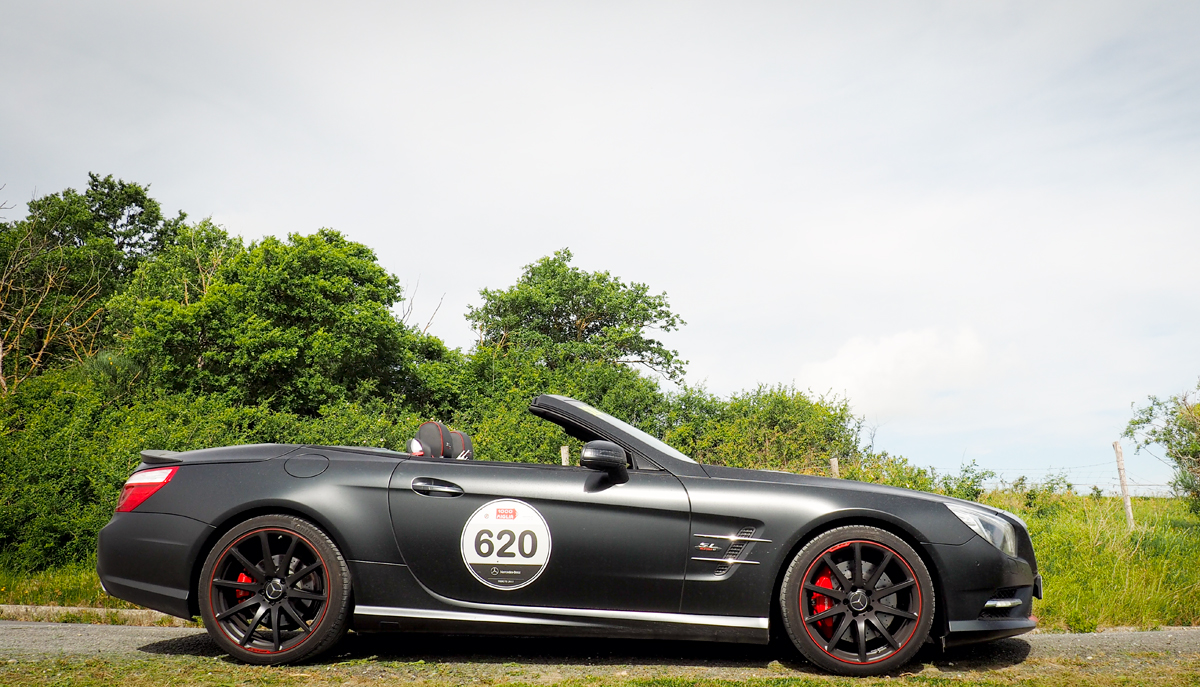
The way the Mille Miglia works for the vintage and tribute cars has evolved over the years. Like the original, there are no highway segments and almost the entirety of the rally is on two-lane, often serpentine secondary roads. What’s distinct today is that neither tribute nor classic cars are piloted by the world’s top racers. But from the 1920s to the mid-1950s, the Mille was where the best racers in the world went to cut their teeth. So where today an F1 driver only races F1, in a more romantic era you’d have greats such as Britain’s Stirling Moss podium in everything from Le Mans to rallies, to endurance events like Sebring in the U.S. And Moss will forever be lauded as the best of the best at the Mille, because in 1955 he covered the 1,000 miles in a still-unrivaled 10:07:48, averaging nearly 100mph, and often piloting his uniquely built Mercedes-Benz 300 SLR at over 175mph on narrow roads. Even if they’d closed every road we traveled during our tour of Italy, what Moss did then still seems unfathomable.
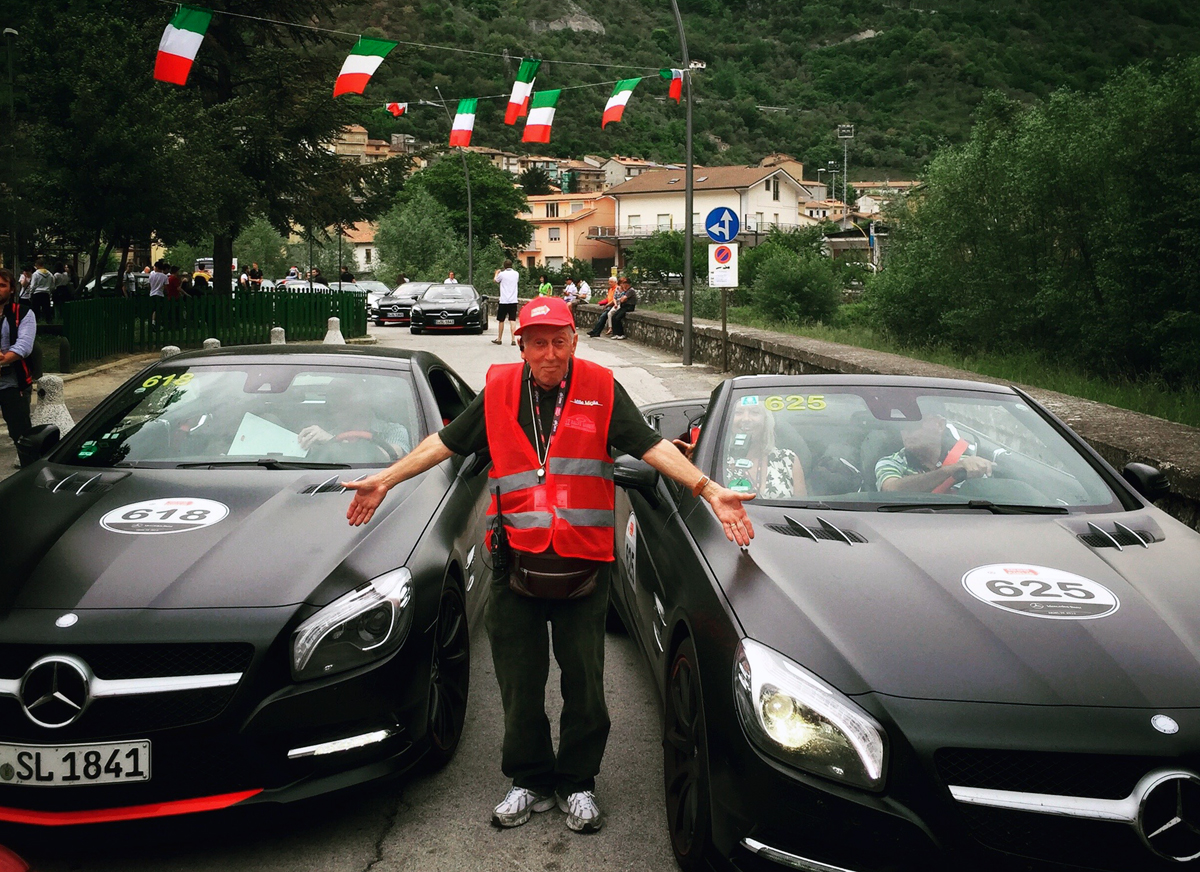
Still, the modern Mille has plenty of risks and challenges. There is a series of time-checks throughout each day: there’s a set time each leg should take, and to gain maximum points you have to finish at exactly the allotted time, neither too soon or too late. You have to aim to get to these early, because there’s always a cluster of cars waiting at each chaotic time-check—and sometimes you’re also fighting regular city traffic.
Within most of the legs there are also small time trials that require driving fairly slowly, but at consistent average speeds, over set-pieces of road. The tough part with this is that the average times are captured by hidden checks that you can’t see, so you literally have to maintain the average speed throughout turns, even chicanes, as well as do some fairly complicated math to figure out what your pace should be as you break down every last kilometer to finish exactly at the allotted time.
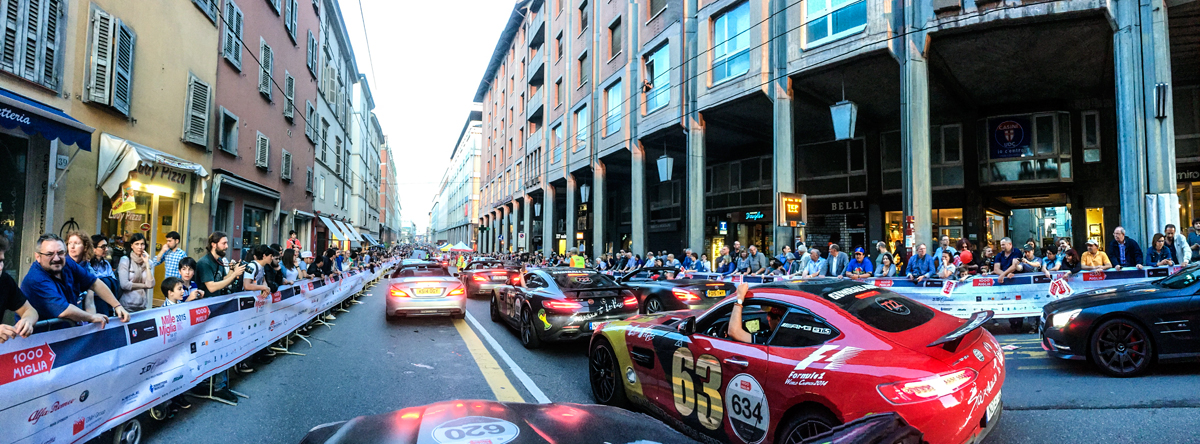
All of this can make for a good deal of stress between co-driver and driver, and to boot, between time trials when you’re hurrying to meet the next checkpoint, the co-driver has to use a specific, phone-book-thick route guide and shout out coming turns and changes in direction, noting landmarks and dangerous intersections. No GPS can help you, either, because this isn’t about getting from point A to point B—you must follow the route or you’ll be disqualified.
Also, a GPS can’t do the math on whether or not we should stop for McDonald’s on the run toward San Marino on Day 1, because our watches say we won’t arrive before 11pm and have to be off before dawn the next day. It’s a miserable concession in a nation with an embarrassment of culinary riches, but we make it gladly, knowing it will mean a few more minutes of sleep upon arrival.
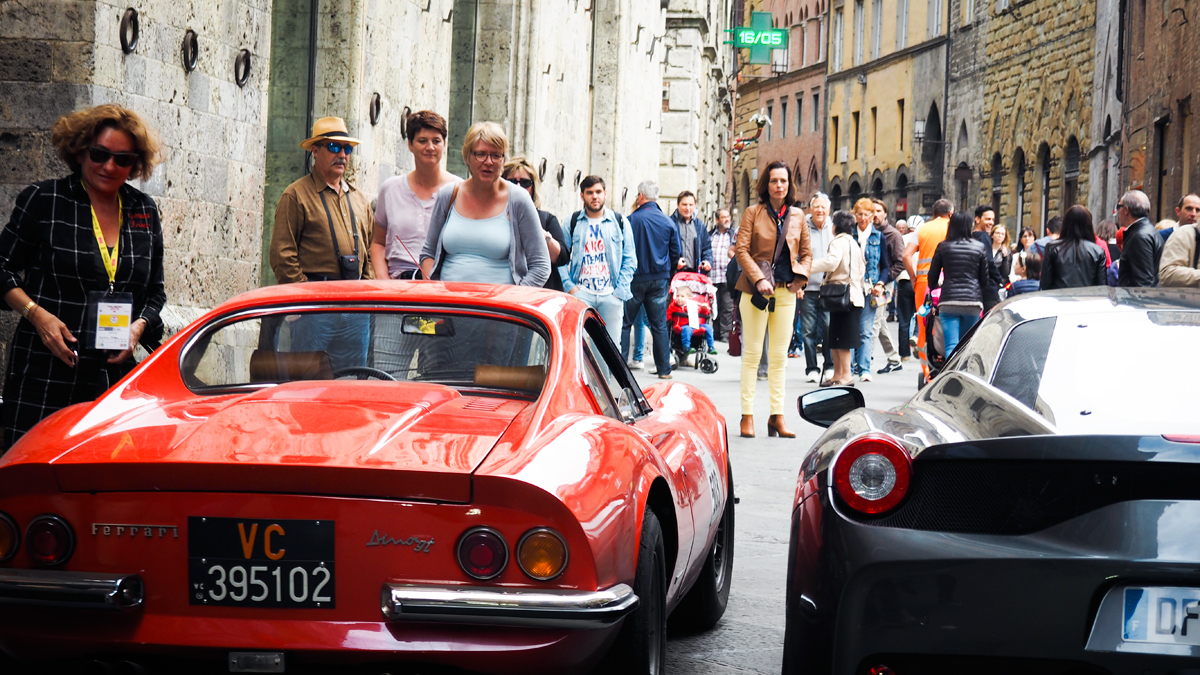
Nowhere else in the world can one witness what you see at the Mille Miglia. Enzo Ferrari called it “a rolling museum,” and that characterization is true, save that since Ferrari’s passing collector cars have shot up 50-fold in value. Cars worth millions are flogged, pushed nearly to their limits, and certainly there’s the risk of crashing. This is anathema to the entire collecting impulse, whether that’s the museum-piece cars you see at Pebble Beach or a Monet kept locked behind UV-proof glass in a private gallery, the value of something rare and beautiful typically engenders curatorial behavior.
Our tribute-class sponsored by Mercedes-Benz (the overall sponsor of the Mille Miglia for a decade running), saw 30-odd cars ranging in value from the Mercedes-Benz SL 500 Special Edition Mille Miglia 417 we piloted, to several Mercedes-McLaren SLRs worth a good $300,000, on up to a few ultra-rare, Mercedes-Benz SLR McLaren Stirling Moss cars that sold for €750,000 when new in 2009, and which are considered by most to be worth well north of twice that figure today. And all that’s pretty cheap compared to some of the vintage iron being raced—ranging from an extraordinary vintage Bugatti or two, to an original Mille Miglia-raced 1952 Mercedes-Benz Gullwing 300SL with a giant wing on the roof.
This is what these cars were built to do, that’s what these things are for, not to leave gathering dust in a museum.
Richard Charlesworth, who works for Bentley, piloted a 1930 4½-litre supercharged Blower Bentley that had been in the Mille 85 years ago, and priced the value of the car somewhere around $15 million. He says, “You have to try to put out of your mind the value of the car when you have three or four cars all going for a gap that’s only wide enough for one.” Adding, “This is what these cars were built to do, that’s what these things are for, not to leave gathering dust in a museum.”
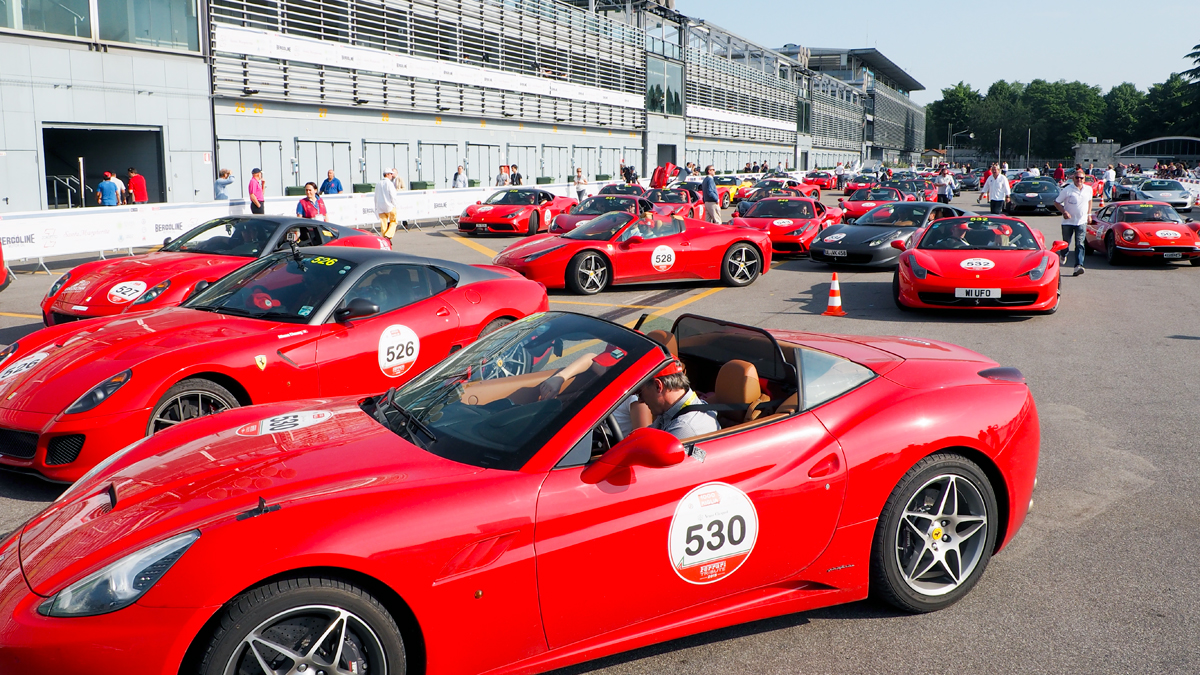
The Mercedes-Benz SL 500 Special Edition Mille Miglia 417 we drove in the rally is essentially a performance and aesthetic package that pays homage to the number 417 300 SL that finished the 1955 Mille as first in the sports car class. (At the time there was both a privateer sports car segment as well as the racing car class.) And while the Mille-edition SL has the same 429hp twin-turbo V-8 as the stock SL 500, in the US it will be called the SL 550 Special Edition Mille Miglia 417 when it goes on sale this fall; expected sticker is somewhere around $125,000.
What was remarkable was how capable the SL performed over the course of several days of exceedingly hard driving. The SL isn’t light, at 4,000 pounds, but at high speeds we kept pace with quicker Ferrari 458s, and held our own against SLS and SLR Mercedes with far more power, largely because the V-8’s 516 lb ft of torque hits hard at just 1,800rpm and doesn’t wane until north of 3,500rpm, so it’s an easy engine to keep ready for sudden acceleration. It’s also a much more nimble car than you’d expect. ESP Curve Dynamic Assist did help keep the rear end from stepping too far out while bending through tight roundabouts, but we’d rather credit an exceptionally forgiving chassis that’s all-day comfortable, yet allows high-speed maneuvers within a very wide window of predictability. You’d never know it from seeing SLs in supermarket lots in the US that these cars are track-worthy, but they truly are.

So why allow modern cars on the Mille at all? There are two good answers: money and time. That is, entering the Mille costs €7,000. Fly your car over from the US and you’re looking at another $18,000 each way. And this high price of entry, not to mention the value of vintage cars, not only makes driving the Mille exclusive, it likely endangers the long-term viability of the event.
And by “time” we mean the time that’s elapsed since so many of these vintage cars were built. At some point down the line they simply won’t be safe for racing or, like Stirling Moss’s original 300 SLR that he drove onto several podiums throughout the four days (but didn’t race), these classics will be deemed priceless. So for the event to continue to draw enough participants modern cars are a necessity, and probably, their participation rate will grow in the future rather than wane.
The Mille Miglia wouldn’t be the same without the classics, some now approaching a century on the road, but it’s also easy to imagine that 50 years from now a future Mille would include the likes of a 2015 SL 550 Special Edition Mille Miglia 417 Mercedes-Benz, and we hope future fans will greet the event with just as much insane fervor as they do today.
Images by Michael Frank











